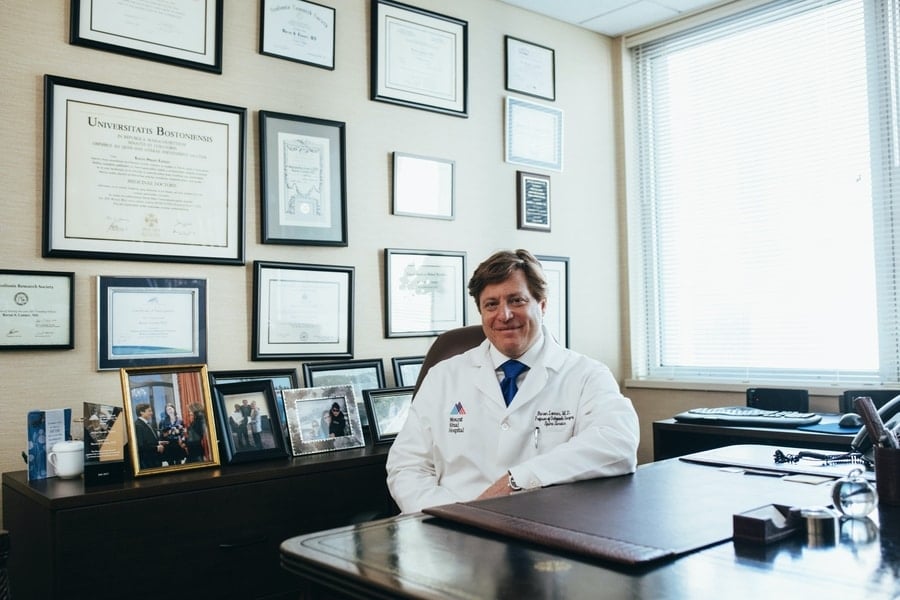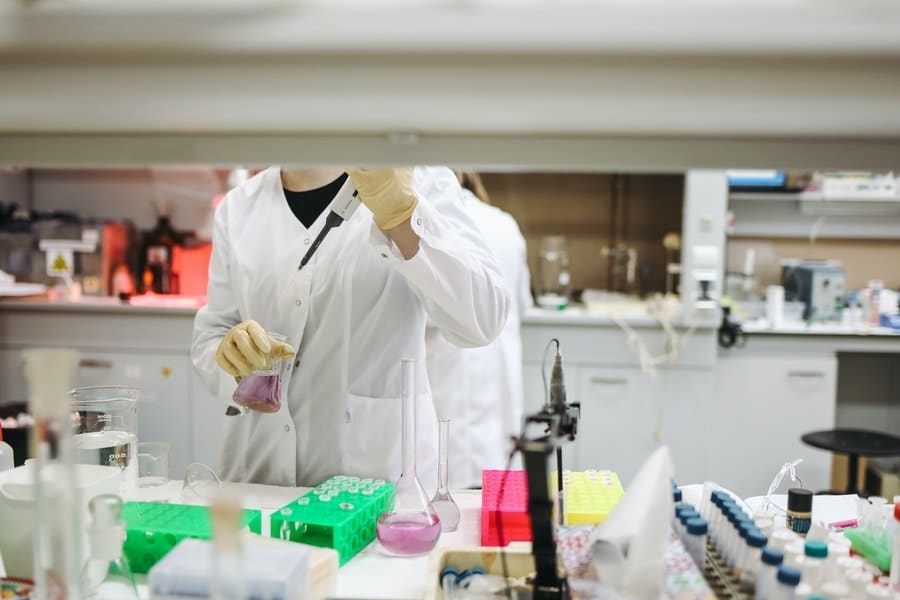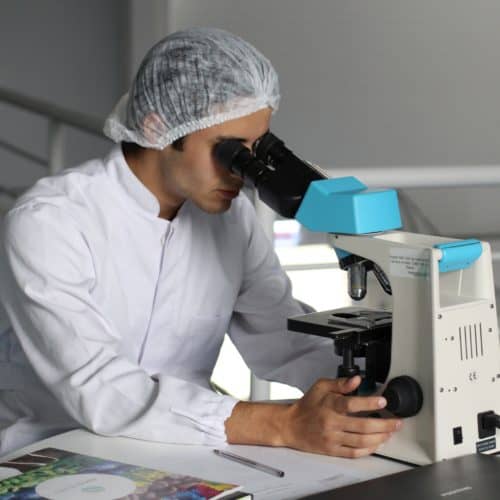
As an MD-PhD trainee, I will share insights on what an MD-PhD program is and my own perspective as someone going through the training. As an application coach, I also meet with college, post-baccalaureate, and master’s students to discuss if the program is the right fit for them. This article also shared some of my advice on how to decide if this path is right for you.
What is an MD-PhD program?
An MD-PhD program is an integrated medical and scientific training program. The intent is to develop trainees as future physician-scientists who can practice clinical medicine and independently conduct research. Moreover, at the intersection of science and medicine, MD-PhDs are well poised to discover new scientific knowledge and conduct translational research.
Typically, the combined medical and graduate school training takes an average of 8 years to complete.
History
The Beginning
MD-PhD programs have been around since the 1950s. First established by Case Western Reserve University, the initial program was small but offered an opportunity to obtain both an MD and a Ph.D. at its institution in less time than pursuing both degrees independently.
In 1964, the National Institute of Health began institutional support for MD-PhD programs through the T32 Medical Scientist Training Program (MSTP). Importantly, this grant provides financial funding to support trainees, as most MDPhD programs offer stipends, health insurance, and tuition waivers.
Today the programs still offer accelerated training to gain both degrees. While there have been individuals who have earned both doctorate degrees without going through the integrated MD-PhD program. However, their training would have been substantially longer.
An average MD takes four years to complete and an average Ph.D. takes an average of 5-6 years. Therefore, it is attractive that dual degree programs accelerate the training timeline by offering both degrees in an average of 8 years.

MSTP vs MD-PhD – is there a difference?
While all MSTP programs are MD-PhD programs, not all MD-PhD programs are MSTP. Out of ~100 active programs, ~45 receive the MSTP T32 award. This provides partial support for about 900 trainees per year, along with research grants, fellowships, and institutional resources. Therefore programs that receive the T32 award are specified as MSTP.
A list of all MD-PhD programs can be found here.
MSTP programs can be found here.
Cost of MD-PhD programs
To offset financial barriers that may deter individuals from pursuing much longer training to obtain both an MD and PhD, most integrated MD-PhD programs offer tuition waivers, stipends, and basic health insurance. It should be noted that the level of support varies by institution. For example, these are stipends that trainees receive at these particular programs:
| INSTITUTION | MD-PHD STIPEND |
|---|---|
| NYU Grossman School of Medicine | $42,840 |
| Duke University | $30,200 |
| UCSF | $42,500 |
| UT-Health | $32,000 |
| Baylor School of Medicine | $34,500 |
Size of MD-PhD programs
The size of an MD-PhD program varies by institution. For example, I have interviewed at a program that had ~20 trainees per cohort, which was on the larger end. On the smaller end, I’ve heard of institutions with as few as two trainees per cohort.
MD-PhD training timeline
| Years | |
|---|---|
| Years 1-2 | Preclinical Years |
| Years 3-6 | Conduct research in your dissertation lab Complete graduate school courses |
| Years 7-8 | Clinical clerkships Additional research experiences Apply to residency |
The timeline of the MD-PhD curriculum varies by institution but in general, there is a 2-4-2 model. Trainees do 2 years of medical school, 4 years of graduate school, and then completion of the last 2 years of medical school.
In the first year, you will likely do the medical school curriculum with the rest of your incoming medical school class. Additionally, there will likely be some incorporation of graduate school activities.
At my program, I did research rotations before Year 1 of medical school and during the summers between Year 1 and Year 2. During Year 1, I also took graduate school courses. A friend at another MD-PhD program did lab rotations alongside medical school classes during Year 1. As you can see, every program does it a little differently. Additionally, how much the graduate school and medical school talk to each other and integrate varies by institution.

PhD topics
MD-PhDs pursue their thesis dissertation in a variety of subjects including the following common ones, according to the AAMC:
Biomedical Sciences include:
- Biochemistry & Macromolecular Biophysics
- Cell & DevelopmentalBiology
- Immunology
- Molecular Biology & Genetics
- Microbiology & Infectious Disease
- Neuroscience
- Pathology & Mechanisms of Disease
- Pharmacology
- Physiology
Other choices include:
- Bioengineering & Biomedical Imaging
- Chemical and Physical Sciences
- Computational Biology & Bioinformatics
- Public Health, Epidemiology & Preventative Medicine
- Social and Behavioral Sciences
- Bioethics
Not every program offers every PhD discipline, so ask to be sure to ask or check out their website.

Career Path and outcomes
More training
After obtaining an MD-PhD, trainees will continue their education and hone their skills. Typically, graduates will pursue residency as their next steps, which last 3-7 years.
Then, individuals will do a postdoctoral fellowship which can be another 3-6 years as well. Cumulatively, individuals pursue 6-13 more years of training after graduating from their MDPhD programs. Eventually, individuals may apply to professor positions at academic institutions to begin their own independent labs, teach, and see patients.
This, of course, varies by individuals. For example, I’ve known MD-PhD graduates who decide that they want to focus on a research career and opt to not do a residency. Rather, they do postdoctoral fellowships right after. Other MD-PhD graduates decide to forgo their research career, so they pursue only residency to become full-time clinicians.
Post-training Roles
Data from the AAMC National MD-PhD Program Outcomes Study showed the following breakdown of MD-PhDs’ roles post-training:
- Academia: 68%
- Private Practice: 14%
- Industry: 7%
- Other: 6%
- Institutes: 5%
Most MD-PhDs pursue residency after graduation
However, the vast majority of MD-PhD trainees go onto residency. Long-term, they are more likely to take on permanent positions in academia compared to their MD-only counterparts. These positions can be at academic medical centers, such as medical schools or teaching hospitals.
Additionally, some MD-PhDs will take on research positions at the National Institutes of Health or other government or private agencies. MD-PhDs that complete their training may also work for pharma or biotech companies.
Most popular specialities for MD-PhDs: internal medicine, pathology, pediatrics, and neurology
For the most part, MD-PhD graduates continue their education through residency and go into various clinical specialties. According to the AAMC, the most popular specialties pursued by MD-PhDs are as follows:
- Internal medicine: 25.3%
- Pathology: 13.2%
- Pediatrics: 12.6%
- Neurology: 8.2%
- Other: 7.4%
MD-PhDs pursue a variety of research topics
Typically after training, MD-PhDs will engage in various types of research. The AAMC National MD-PhD Program Outcomes Study found the following breakdown of the types of research that the respondents conducted:
- Translational: ~70%
- Basic Science: ~58%
- Health Services: ~10%
- Other: ~10%
Competitiveness
Investing in an MD-PhD trainee is expensive. Thus, it’s not surprising that admissions committees invest significant time and effort to screen and interview the right candidates. According to the AAMC 2018-2019 entering class data, 1,855 individuals applied and 672 enrolled in the MD-PhD program. Moreover, MD-PhD applicants represent 3% of the medical school applicant pool (Brass, 2018). Typically, about one-third of the applicants are accepted, which is similar to the acceptance rate for medical school.
According to the AAMC 2018-2019 entering class data, the average GPA is 3.8 (range 2.8-4.0) and average MCAT is 515 (range: 495-528).
What does an ideal MD-PhD applicant look like?
According to the AAMC, they look for the following:
- Applicants with integrity and maturity who show creativity
- Leadership potential
- Ability to work with others
- Aptititude to address big questions in biomedical research
- Research experiences
- Academic record (MCAT, GPA)
- Personal Statement
- Strong letter of recommendations from research mentors
- Experience in caring for others
- Extracurricular activities and life experiences
According to the AMCAS 2018-2019 entering class data, all students had shadowing experience and clinical exposure. Many of the applicants also had a community service experience. Most applicants completed multiple summer research projects sustained undergraduate research or both; some also had postbaccalaureate research experience. Some had publications and first-author publications were rare.
Application Timeline
| Time | Description |
|---|---|
| Summer before entry year | Application to AMCAS Secondaries to Specific Schools |
| October to February | Interviews |
| November to March | Final Decisions Waitlist Offers |
| March to April | Revisit Program |
| June to August of entry year | Start Program |
Primary Application
If you are aiming to apply for the Class of 2023, then you would prepare your primary AMCAS application in the summer of 2022. As a matter of fact, I advise my students to begin drafting their personal statements and asking for letters of recommendation from professors in the Winter-Spring. I highly recommend students submit their applications within a couple of weeks of the AMCAS opening in early May.
This is because you can be considered for medical school as the first group of applicants in the cycle. Additionally, it would reduce the time for your application to be reviewed.
Secondary Application
Then after submitting your primary application, you will wait for it to be processed. Schools will then send you secondary essays which can range in prompts, from “Why this school?” to “Tell me a time when you’ve overcome a challenge.” You can learn more about addressing common secondary prompts here.
Interviews
When you complete secondary applications, you will then wait and hopefully receive an interview invite. These invites get sent anytime in October to February typically. Although, it will vary by school.
You may also begin receiving decisions and waitlist offers from November to March – again this varies by the program. I began hearing back from MD-PhD programs as early as December.
Subsequently, from March to April, there are revisit programs where you can meet your potential peers in the cohort. For example, we take our accepted students to see New York City and plan fun activities for them to get to know the current students and institution better.
For more information, you can read more in-depth on medical school applications and timeline here:
The Primary Application for MD-PhDs
The AMCAS primary application requires the following components:
| SECTION | INFO |
|---|---|
| 1-3 | Background and biographical information |
| 4 | Undergraduate transcripts and courses |
| 5 | Work and extracurricular activities (up to 15 entries); includes shadowing, volunteering, research, leadership activities, presentations, employment |
| 6 | Letter of recommendations – submit one LOR from each substantial research experience; LORs should attest to your potential as a physician-scientist |
| 7 | Select medical school program you are applying to |
| 8 | Personal statement |
| 9 | MCAT score |
| Additional | MD-PhD essay one: MD-PhD Motivation Essay (why pursue MD-PhD Degree?) MD-PhD essay two: Significant Research Experience Essay (describe your research experience) |
Why MD-PhD Essay:
In this first MD-PhD specific essay, you will describe what motivated you to pursue an MD-PhD program.
Significant Research Experience Essay:
The second MD-PhD-specific essay asks you to describe your research experience. To do so, the AAMC recommends the following:
- Describe the research in your lab
- Describe your research project
- Did you test a hypothesis or conduct discovery research?
- Describe your role on each project
- What did you learn?
- What did this project teach you about your career path?
Is MD-PhD right for you?
It really comes down to what your goals are and what you are passionate about. MD-PhD trainees have the opportunity to solve mechanisms underlying disease, combined with the ability to treat patients. Being chimeras of both the medical and scientific fields can also help incubate new scientific questions and generate new discoveries that can be brought back into the clinic to help patients.
For me, I always knew that I wanted to devote a substantial amount of my career to research but also wanted to remain connected to patients. Undoubtedly, the extra four years to gain significant research training on top of the 4 years of medical school was worth it for me.
The MD/PhD programs are great ways for individuals who’ve decided early on that they want to become physician-scientists and train in both medicine and research. I’ve found that the MD/PhD program has helped me begin building a track record of success.
Not only do I gain the skills to conduct research projects independently, but I’ve also learned grant-writing. Without a doubt, grant-writing is an important skill that independent researchers need, as funding is required to run a successful laboratory. Moreover, applying and obtaining the NRSA Individual Predoctoral Fellowships (F30) is a great achievement to show that you are capable of writing a grant and obtaining funding to support your research.
Suggested Reading:


